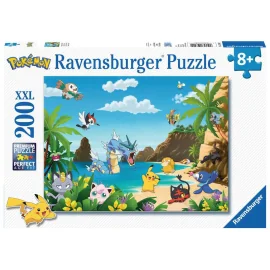1001prime price 20.98

- Made in Europe
Shipped in 24h
1001prime price 20.98

1001prime price 22.16

1001prime price 20.98

1001prime price 20.98

1001prime price 18.60

1001prime price 22.16

1001prime price 20.98

1001prime price 19.39

1001prime price 20.98

1001prime price 18.60


1001prime price 21.37

1001prime price 21.37

1001prime price 17.80

The game of patience involves putting pieces together to reconstruct an illustration. Children's puzzles should be age-appropriate.
There are many factors to consider before buying a jigsaw puzzle for your child:
Wooden build-in puzzles are shock-resistant and can be used over and over again. In general, their pieces have buttons that make them easy to grasp. So children won't have any trouble positioning them on the board.
Choose animal or vehicle themes to attract the attention of young children. Choose a Djeco puzzle, for example.
Puzzles for 2-year-olds are generally made of cardboard or wooden blocks. They're easy to handle, as all you have to do is turn them to put the picture together. With a Janod or Djeco puzzle, you can reproduce six different drawings.
Puzzles suitable for children aged 3 are silhouette puzzles. They are made up of between 12 and 35 pieces with beautiful illustrations. For children aged 5, puzzles with 50 to 100 pieces are more suitable.
Djeco puzzles come in several themes:
To help your children have fun and develop, choose these educational toys.
For children aged 6, observation puzzles with 150 to 300 pieces are adapted to their intellectual capacity. These are great gifts to impress even the most inquisitive toddler.
A jigsaw puzzle for 7-year-olds generally contains between 300 and 500 pieces. They're great for developing concentration and patience.
For children aged 8, a jigsaw puzzle with more than 500 pieces is suitable for their level. You can give a young player a 3D model. For children aged 8 and over, put away the scooter, early years toys, etc. and encourage your child's agility and alertness. For example, they can play at putting things together:
For children aged 10, Djeco, Janod, Ravensburger, etc. puzzles are among the best gifts to give.
Puzzles help to develop :
Like chess, they also help children to develop a sense of logic. However, you need to choose the right models.
To reconstruct a picture :
Back
In the USA 🇺🇸, Canada 🇨🇦 and the world 🌎 with UPS
Easy return within 30 days after your purchase
More than 150,000 products for your hobbies, including more than 15,000 in stock and shipped the same day
Monday to Friday, 8AM to 12PM EST, by Email : contact@1001hobbies.com
I become a 1001prime member and enjoy a host of benefits